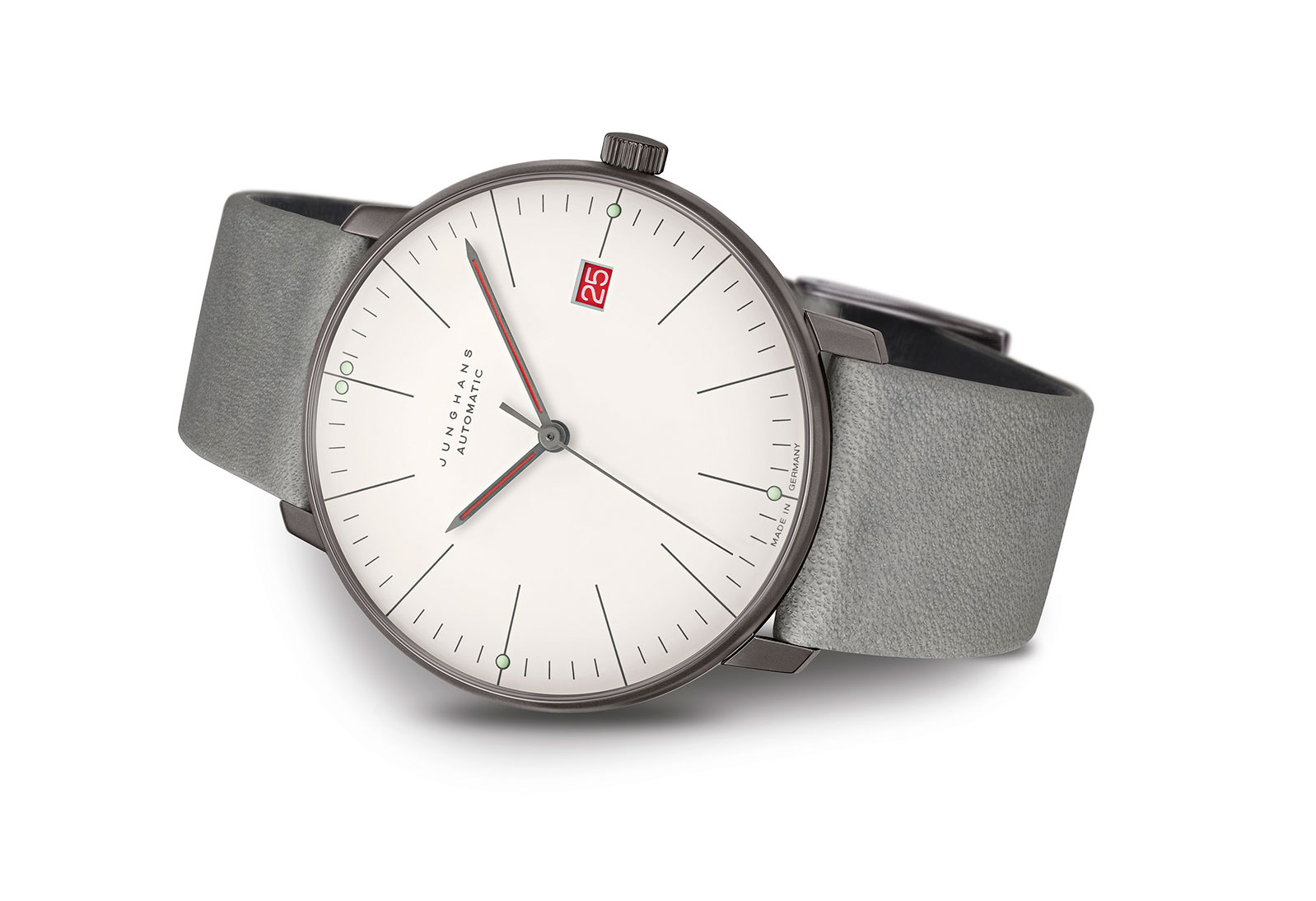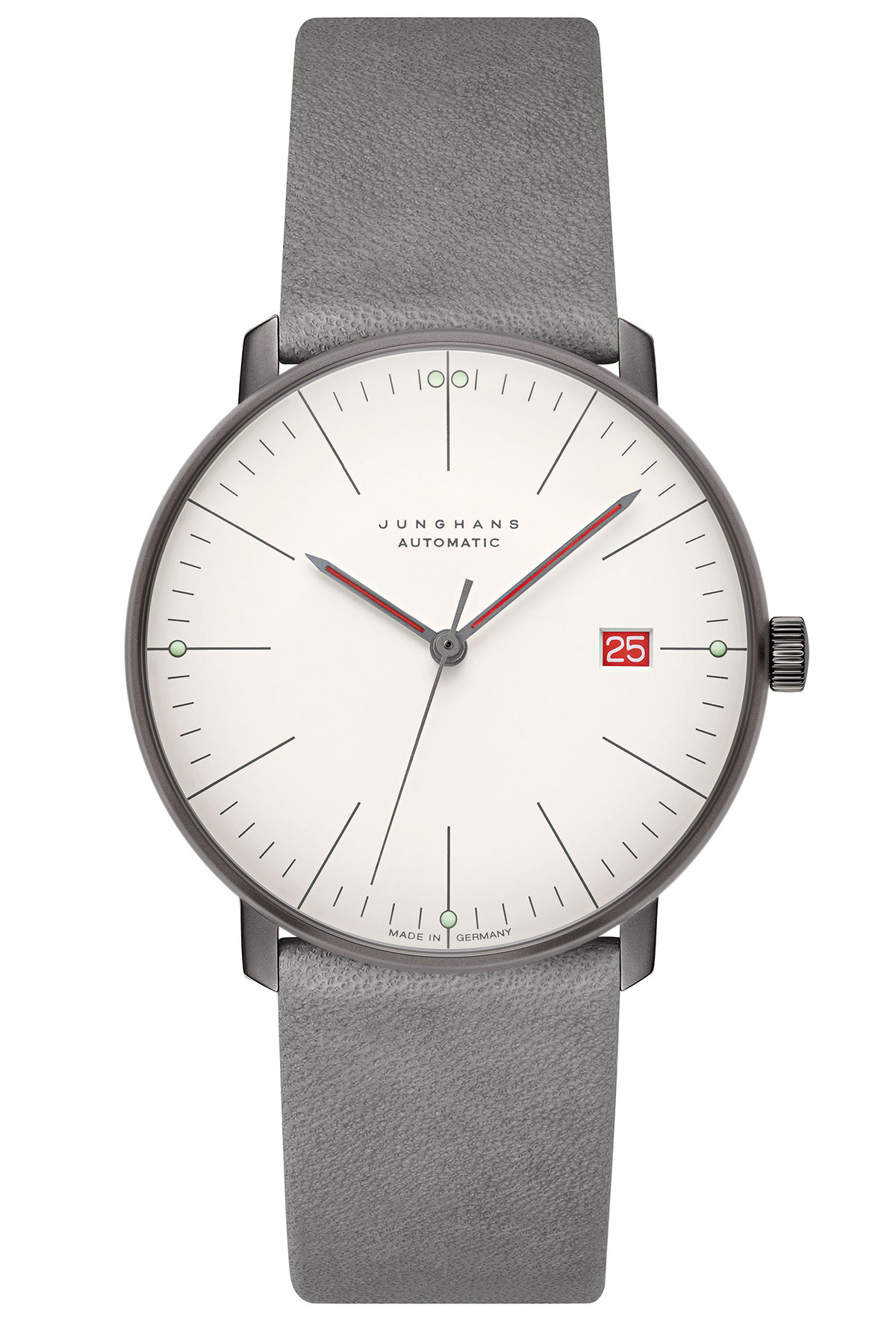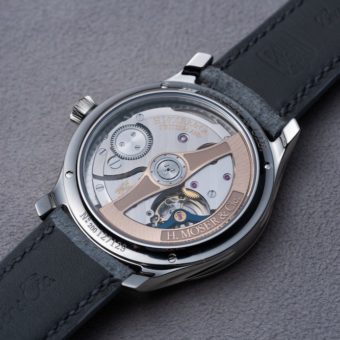Germany’s Junghans watch brand has long been known by its ardent admirers for a dedication to simple designs inspired by principles of the Bauhaus, the influential German design school established in 1919 in Weimar. As the Bauhaus marks its centennial in 2019, Junghans offers a new watch from its flagship max bill collection that pays the Bauhaus its most direct homage yet. Read on to discover this week’s Watch to Watch, the Junghans max bill Automatic 100 Jahre Bauhaus.

For those not in the know, Max Bill (1908-1994), the original watch’s namesake product designer, studied at the Bauhaus shortly after it expanded its facilities to the city of Dessau in 1925. Upon laying eyes on Dessau’s Bauhaus building after his arrival there in 1927, Bill was exhilarated by its “white walls and huge dark glass facades… and the balcony doors accentuated in red lead” and used those aesthetic elements in his work over the years, including the max bill watches and clocks that he designed for Junghans, a longtime client. The new watch, which is limited to 1,000 pieces, not only features a host of these influences but also represents the first time a Junghans max bill watch has offered a view of its internal workings through the caseback. The round, 38-mm case is in stainless steel, with a matte-anthracite PVD coating that recalls the look of the Bauhaus building facade, and wafer-thin at just 9.7 mm high. The matte silver dial is evocative of the Dessau building’s white walls, while the red hands and date window pay tribute to the color of its famous red doors.

The gray strap is inspired, Junghans says, by the color of concrete, the material used in the Bauhaus’s construction. The facade of the building, with its renowned large windows, decorates the clear mineral-glass window in the screwed caseback, offering through its gridlike structure tantalizing glimpses of the watch’s self-winding movement, Caliber J800.1, based on the Swiss-made ETA 2824-2 and possessing a power reserve of 38 hours. One more somewhat subtle red detail can be found on the back, accentuating the Bauhaus door. the price for this 1,000-piece limited edition has yet to be announced.







